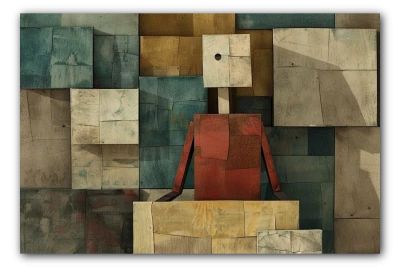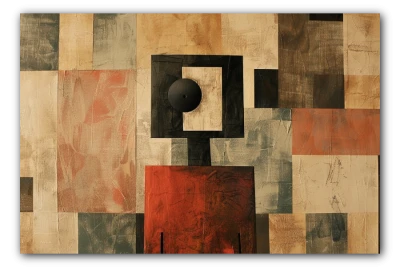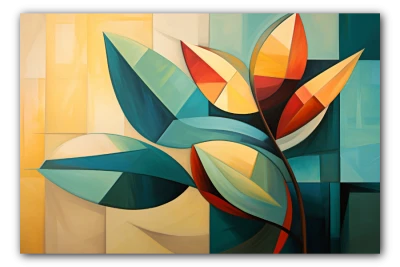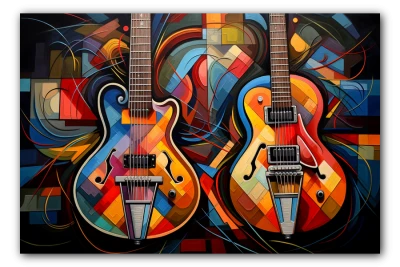Cubism
Between Geometry and Emotion
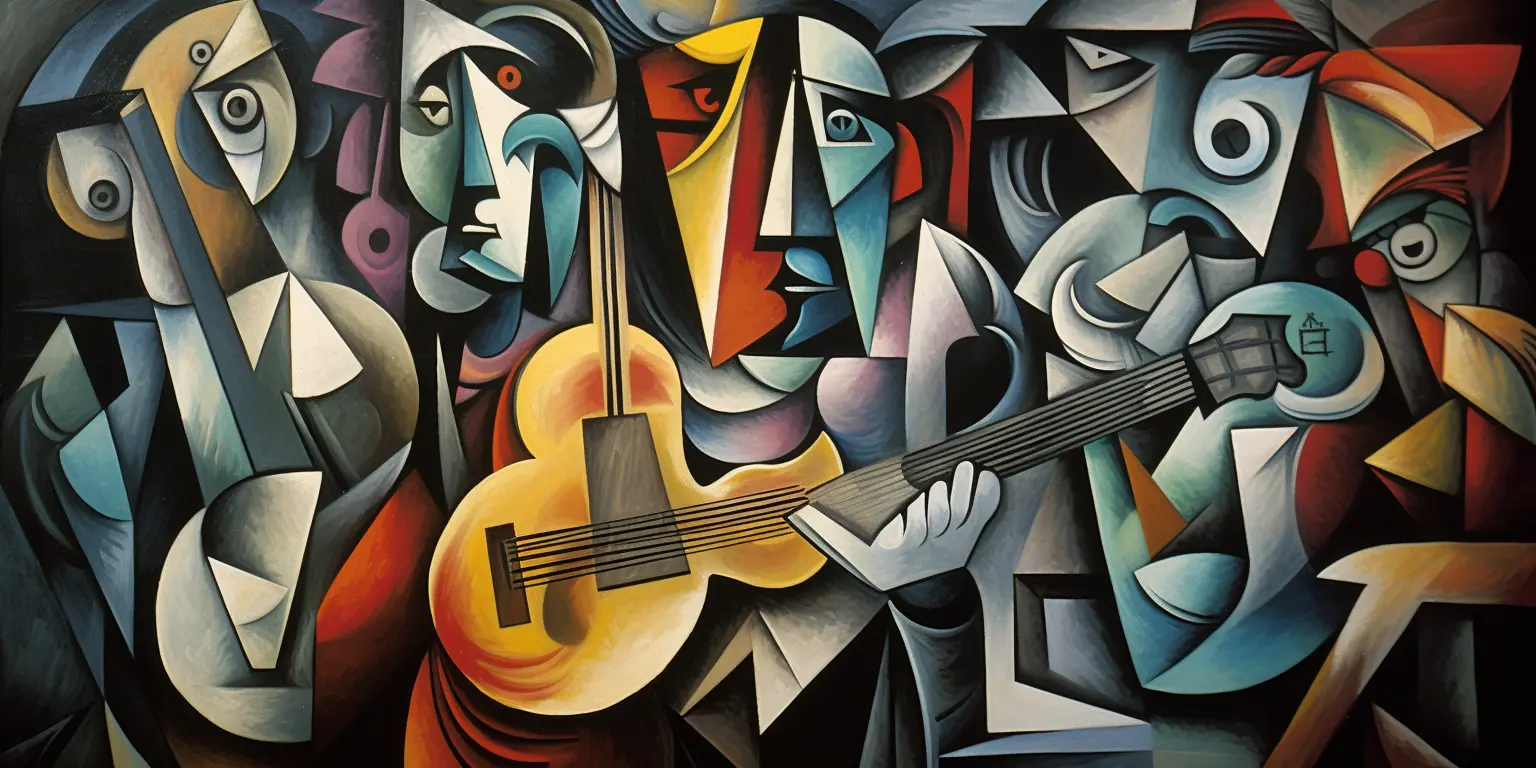

Origins of Cubism and Its Historical Context
Deciphering the Origins: A Deep Look into the Historical Context of Cubism
At the beginning of the 20th century, the artistic scene was imbued with an air of change and rebellion. The strict rules of academic realism were being challenged, and artists were seeking new forms of expression. In this hotbed of creativity and innovation, Cubism found its place.
The historical context of Cubism is intrinsically linked to a period of cultural and social transformation. As society advanced towards modernity, artists aimed to represent the complexity and fragmentation of reality in their works. This movement not only broke with established artistic conventions but also reflected the cultural rupture of the era.
Scientific and philosophical movements, along with transformations in the perception of time and space, influenced the gestation of Cubism. Einstein's theory of relativity and the influence of African art were just some of the currents that fueled the creativity of Cubist artists like Picasso and Braque.
The Pioneers of Cubism: Picasso and Braque, a Creative Partnership that Changed Art History
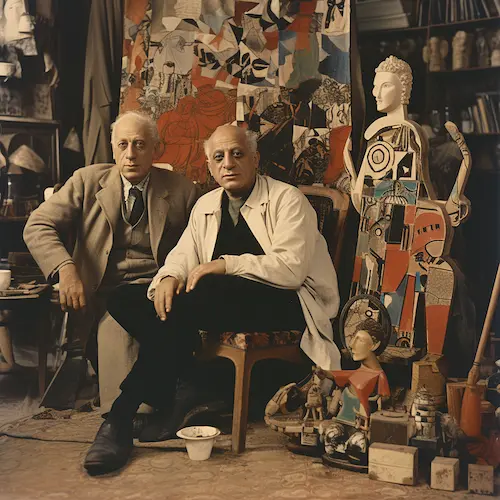
Picasso and Braque, two giants of 20th-century art, forged a creative collaboration that left an indelible mark on art history. In the first decade of the century, these two masters embarked on a joint journey, exploring new ways to represent reality through Cubism.
Their revolutionary partnership led to the development of two phases of Cubism: Analytical Cubism, characterized by the breakdown and analysis of forms, and Synthetic Cubism, where more figurative elements were incorporated. This innovative approach transformed the way art was conceived and perceived.
The collaboration between Picasso and Braque not only marked the rise of Cubism but also served as an inspiration for future generations of artists. Their joint creativity sparked an artistic revolution that transcended the barriers of their time, leaving a lasting legacy in art history.
Analytical Cubism vs. Synthetic Cubism: Unraveling the Two Phases of the Movement
Analytical Cubism vs. Synthetic Cubism: Unraveling the Two Phases of the Movement
In the complex universe of Cubism, two distinct phases stand out: Analytical Cubism and Synthetic Cubism. The former, marked by the dissection and decomposition of forms, represents the initial phase of this revolutionary movement.
On the other hand, Synthetic Cubism emerges with a different perspective. Characterized by the reintegration of figurative elements and the inclusion of new textures and materials in the works, this phase marks a shift towards the synthesis of more recognizable forms.
Unraveling these two phases is essential to understanding the evolution of Cubism. Each contributes uniquely to the richness of the movement, offering a fascinating insight into how Cubist artists approached the representation of reality in innovative and visionary ways.
The 10 Most Famous Cubist Paintings
Cubism, a revolutionary artistic movement of the 20th century, transformed the way reality was represented in painting. Here we present the 10 most influential paintings that encapsulate the essence of Cubism and its lasting impact on the art world.
1. Les Demoiselles d'Avignon (1907) - Pablo Picasso
Often considered the cornerstone of Cubism, Picasso's "Les Demoiselles d'Avignon" radically broke away from traditional perspective and opened the doors to a new way of representing reality. The work depicts a group of female figures with angular and fragmented forms, reflecting African influence.
2. The Weeping Woman (1937) - Pablo Picasso
Although it belongs to a later stage of the artist, "The Weeping Woman" is a poignant work that conveys pain and suffering through the distorted and broken forms typical of Cubism, showing Picasso's continued mastery of this style.
3. Violin and Guitar (1913) - Juan Gris
Juan Gris brought greater clarity and order to Cubism. In "Violin and Guitar," the clean lines and colorful surfaces are harmoniously organized, demonstrating an evolution towards a more synthetic and less chaotic Cubism.
4. Still Life with Chair Caning (1912) - Pablo Picasso
This is one of the first works of Synthetic Cubism, where Picasso incorporates real material into the canvas, in this case, rope, adding a tactile dimension and blending painting and sculpture, thus challenging the boundaries of art.
5. Houses at L'Estaque (1908) - Georges Braque
Georges Braque was another pioneer of Cubism. In "Houses at L'Estaque," he applies a restricted color palette and simplifies the forms into cubes and cylinders, which led art critic Louis Vauxcelles to coin the term "Cubism."
6. Three Women (1921) - Fernand Léger
Characteristic of his style, Fernand Léger brought human figures into a composition robust and volumetric in "Three Women," showcasing his personal interpretation of Cubism, where each object is clearly defined and almost architectural in form.
7. Guitar, Glass, and Bowl (1924) - Pablo Picasso
Continuing his exploration of Synthetic Cubism, Picasso plays with the overlapping of flat shapes and patterns in "Guitar, Glass, and Bowl," reinterpreting everyday objects and altering our perception of them.
8. The Portuguese (1911) - Georges Braque
In "The Portuguese," Braque explores the decomposition of form and its reconstruction on a two-dimensional plane, an approach that would become one of the hallmarks of early Cubism.
9. Woman with a Guitar (1913) - Georges Braque
"Woman with a Guitar" is another excellent example of the break with traditional perspective. Braque dissects and reassembles the human figure into a series of geometric planes, reflecting a more abstract interpretation of form.
10. Ma Jolie (1911-12) - Pablo Picasso
Picasso mixes text with image in "Ma Jolie," a technique that would become common within Synthetic Cubism. The canvas is both a portrait and a complex arrangement of signs and symbols, challenging the viewer to interpret the intertwined forms.




